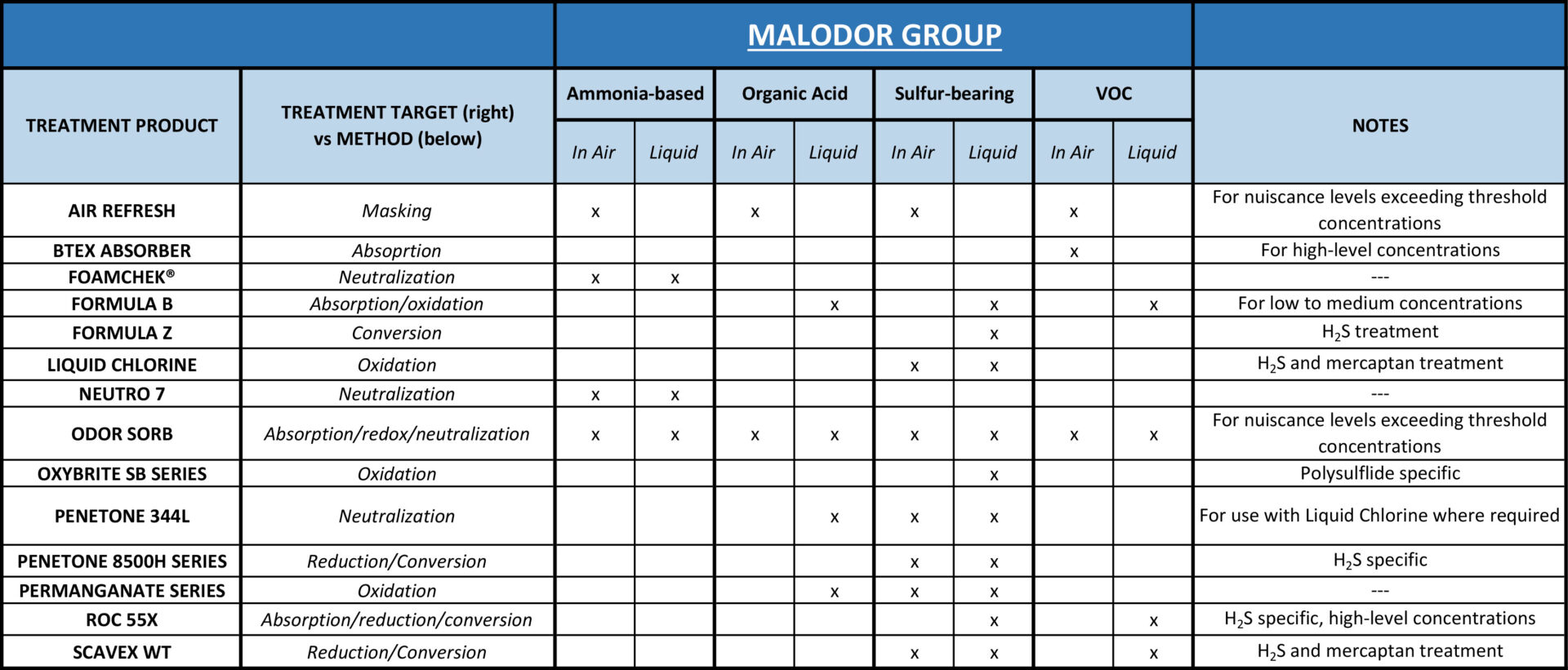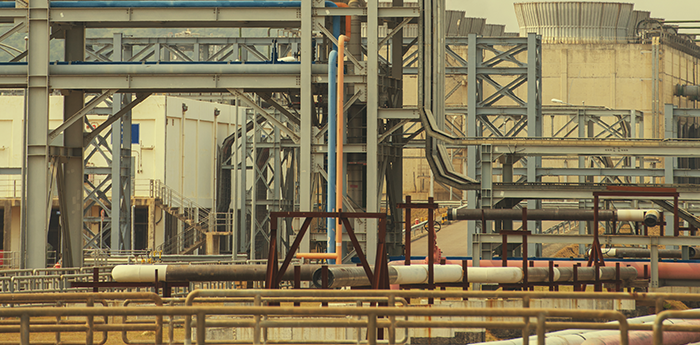Malodorous gas emissions can be categorized into specific chemical groups. These groups include such categories as sulfur-bearing compounds, organic acids, amine- and ammonia-based compounds, and halogenated or non-halogenated volatile organic compounds (VOC’s). Each of these chemical groups can present a variety of issues including respiratory tract irritation as well as other physical or health safety hazards.
Treatment of waste fluids presenting any of these malodorous gas emissions can require a variety of processes, depending on the source or complexity of the odorous mixture. These odor treatment processes include the following:
- Masking – the use of a more odorous compound such as a perfume or essential oil to cover or mask the detection of the malodor.
- Microbial control – the use of biocides or biostats to eliminate and suppress the growth of microbes creating the malodor. In some cases, these products can also be used to control the produced malodor (e.g., hydrogen sulfide gas produced by sulphate-reducing bacteria).
- Absorption – the use of a fixative to increase the aqueous solubility or reduce the evaporation rate of a volatile malodor.
- Destruction – the use of a chemically active material to directly oxidize, reduce, catalyze, convert, or neutralize the malodor.
Along with malodor composition and target threshold concentration or exposure limit, the choice of treatment process to apply depends on the suitability of air versus liquid phase treatment, mixing conditions, and available residence time for reaction or equilibration. Where applicable, the composition and physical properties of the liquid phase will also dictate the type of treatment process to employ. For example, whether it is more feasible to physically degas the liquid and then control and treat the emissions or if it is more feasible to directly treat the liquid.
Below are West Penetone products used to target specific malodor groups. Not included here are products for microbial control. For efficient application, consulting the product bulletin and WP technical services is recommended. Other product options, not listed in the table below, may be available depending on the required treatment option.


